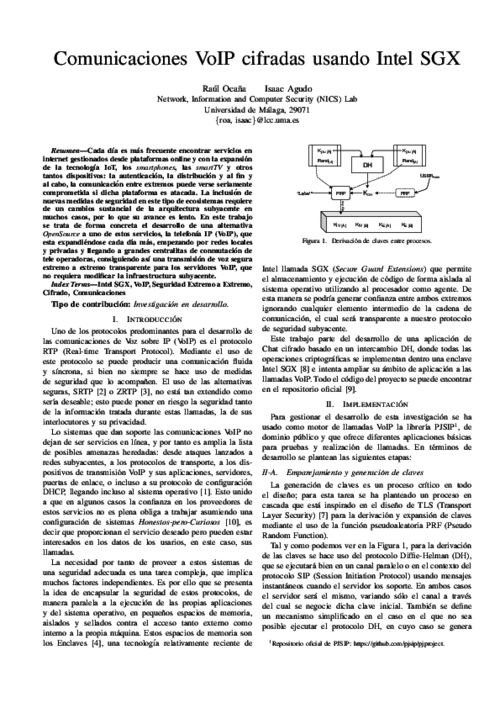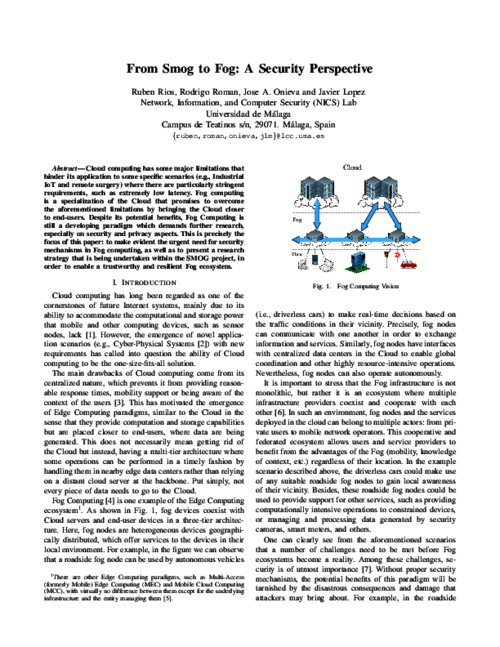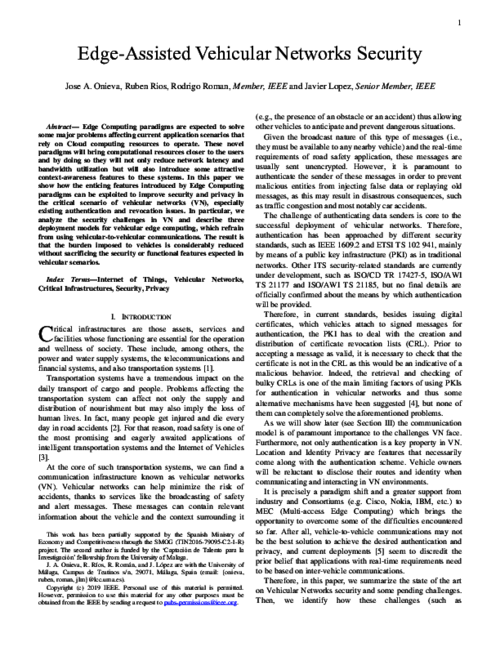 ] Year
] Year V Jornadas Nacionales de Investigación en Ciberseguridad (JNIC), 06/2019.
Abstract
Cada día es más frecuente encontrar servicios en internet gestionados desde plataformas online y con la expansión de la tecnología IoT, los smartphones, las smartTV y otros tantos dispositivos: la autenticación, la distribución y al fin y al cabo, la comunicación entre extremos puede verse seriamente comprometida si dicha plataforma es atacada. La inclusión de nuevas medidas de seguridad en este tipo de ecosistemas requiere de un cambios sustancial de la arquitectura subyacente en muchos casos, por lo que su avance es lento.
En este trabajo se trata de forma concreta el desarrollo de una alternativa OpenSource a uno de estos servicios, la telefonía IP (VoIP), que esta expandiéndose cada día más, empezando por redes locales y privadas y llegando a grandes centralitas de conmutación de tele operadoras, consiguiendo así una transmisión de voz segura extremo a extremo transparente para los servidores VoIP, que no requiera modificar la infraestructura subyacente.

2nd IEEE International Conference on Fog and Edge Mobile Computing (FMEC 2017), IEEE Computer Society, pp. 56-61, 06/2017. DOI
Abstract
Cloud computing has some major limitations that hinder its application to some specific scenarios (e.g., Industrial IoT, and remote surgery) where there are particularly stringent requirements, such as extremely low latency. Fog computing is a specialization of the Cloud that promises to overcome the aforementioned limitations by bringing the Cloud closer to end-users. Despite its potential benefits, Fog Computing is still a developing paradigm which demands further research, especially on security and privacy aspects. This is precisely the focus of this paper: to make evident the urgent need for security mechanisms in Fog computing, as well as to present a research strategy with the necessary steps and processes that are being undertaken within the scope of the SMOG project, in order to enable a trustworthy and resilient Fog ecosystem.

IEEE Internet of Things Journal, vol. 6, issue 5, IEEE Computer Society, pp. 8038-8045, 10/2019. DOI
Abstract
Edge Computing paradigms are expected to solve some major problems affecting current application scenarios that rely on Cloud computing resources to operate. These novel paradigms will bring computational resources closer to the users and by doing so they will not only reduce network latency and bandwidth utilization but will also introduce some attractive context-awareness features to these systems. In this paper we show how the enticing features introduced by Edge Computing paradigms can be exploited to improve security and privacy in the critical scenario of vehicular networks (VN), especially existing authentication and revocation issues. In particular, we analyze the security challenges in VN and describe three deployment models for vehicular edge computing, which refrain from using vehicular- to-vehicular communications. The result is that the burden imposed to vehicles is considerably reduced without sacrificing the security or functional features expected in vehicular scenarios.
